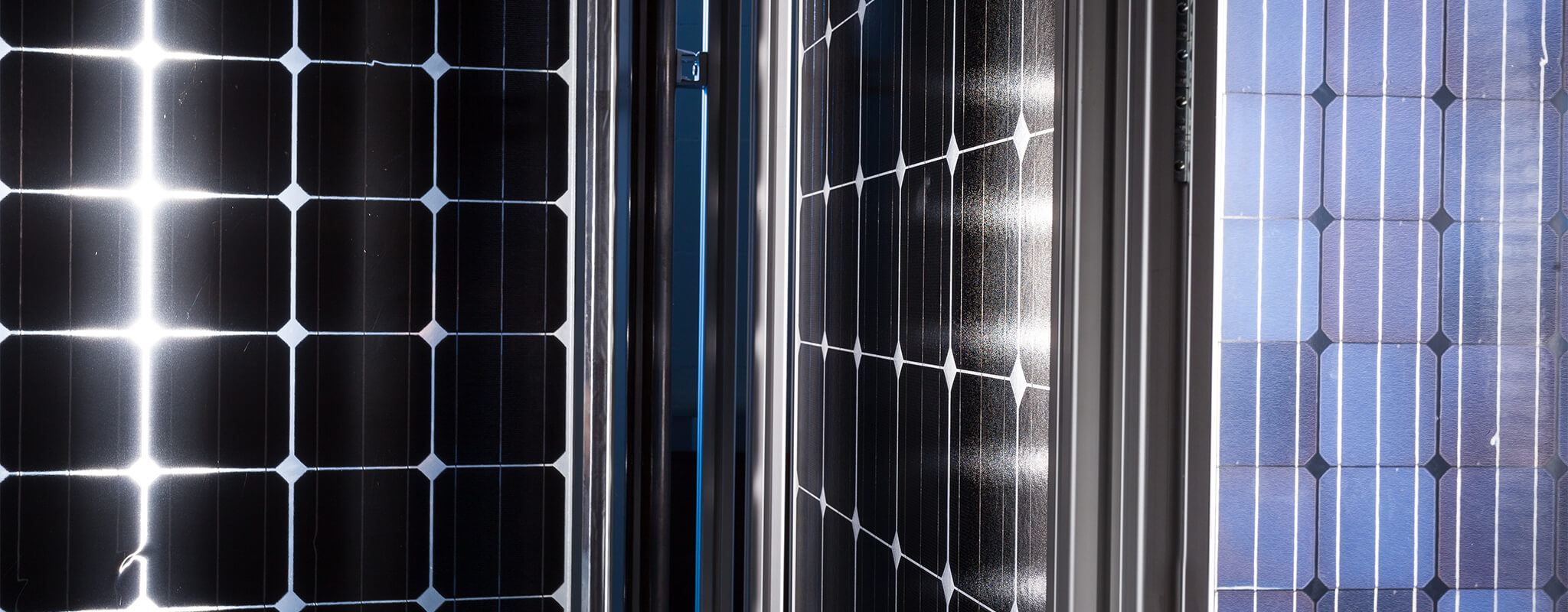Bifacial PV modules convert radiation that is incident on the back surface into additional electricity. Depending on the module design, mounting and surroundings, additional yields of typically 5 to 15 % can be achieved. To allow our clients to tap this potential, we have comprehensively analyzed the specific features of bifacial technology from the solar cell up to the system.
Maximum Yields and Greatest Reliability with Bifacial PV Modules
Photovoltaic Modules and Power Plants

Module Design
The higher current density requires adaptation of the cell and connector design. At Fraunhofer ISE, the »SmartCalc.CTM« calculation tool was extended to include bifacial modules. The tool allows module power and efficiency to be optimized by varying numerous material and design parameters. Module manufacturers need only a few mouse clicks to improve their product.
Characterization and Testing
In CalLab PV Modules at Fraunhofer ISE, methods were developed to characterize bifacial modules with simultaneous irradiance of both surfaces and to determine the bifaciality factor. This factor quantifies the ratio of the efficiency values for irradiance of the back to the front and is needed for product specification and yield prediction. In TestLab PV Modules, we have developed methods for testing bifacial modules and for adapting the current testing standards, IEC 61215 and IEC 61730. Particular attention was paid to the role of backsurface irradiance and partial shading during hot spot testing.
Yield Analysis and Optimization
The yield of a bifacial PV power plant depends on many different parameters. Their complex interaction can be modelled accurately with ray-tracing methods. In ray-tracing, we use an algorithm that calculates the incident light beams in three-dimensional space. In this way, we obtain much more accurate results than with widespread approximations based on view factor procedures. Our tool allows not only the analysis and optimization of the system design, e.g. the distance between module rows or the ground properties (albedo). Manufacturers also receive indications on designing modules and mounting racks to avoid critical partial shading on the back surface of the module. The yield predictions were convincingly confirmed by monitoring bifacial modules at different locations. Installation companies and investors use our predictions to present the added value of bifacial technology.